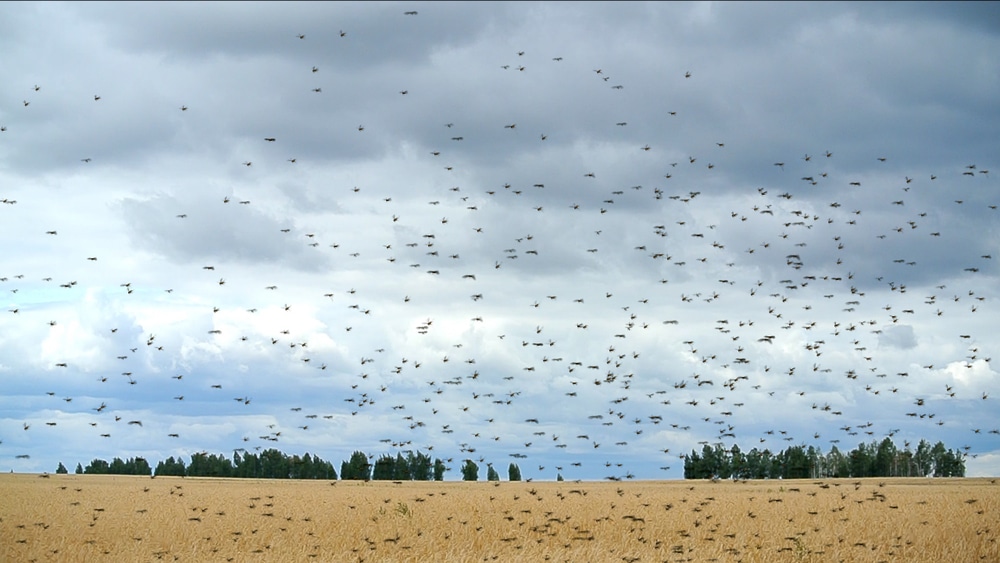A massive swarm of grasshoppers has invaded Tooele, Utah, causing significant damage to crops. The plague-like surge was captured by weather radar systems of the National Weather Service on the evening of June 21 as it headed northeast toward the Great Salt Lake.
Alex DeSmet, a meteorologist, told the Salt Lake Tribune that the unusual radar detection of the grasshoppers was associated with their distinctive non-uniform movement. Unlike weather events such as rain or snow, grasshopper swarms exhibit irregular patterns.
“This is not a common thing,” said Kris Watson, the state entomologist managing Utah’s insect and pest program at the Utah Department of Agriculture and Food (UDAF). “Grasshoppers themselves are common, but for them to show up on a radar detection — to my understanding, it’s not very common.”
This infestation coincided with a widespread drought that has affected several states in the region. The grasshopper invasion mainly affected farmers and ranchers, who rely on forage availability for their livestock.
Experts believe the prolonged drought created favorable conditions for grasshopper eggs to hatch and develop into adult insects.
In response, the UDAF offers a grasshopper and Mormon cricket suppression program to assist affected producers. Farmers can apply for free pesticides through a government cost-sharing program.
However, the effectiveness of these measures has been questioned by farmers, especially considering the challenging conditions posed by the ongoing heatwave and drought.
Although grasshoppers are native to the western United States, their populations have traditionally been controlled by weather conditions, natural predators and diseases over millions of years.
However, the warmer and drier winters experienced since the spring of 2020 have led to a surge in grasshopper populations. The few rains that promoted the growth of grass – a primary food source for young grasshoppers – further contributed to the population explosion.
Farmers in the region have been left devastated as the grasshoppers devoured their crops, leaving behind barren fields. Michael Dow, a rancher in Tooele, shared his dismay. “Every bit of alfalfa that’s in my fields is gone.
It was bare dirt within a matter of hours,” he said. Reports of insect-related troubles have been emerging from the area over the past few weeks.
Swarms of grasshoppers are notorious for their ability to quickly destroy crops, consuming vast quantities of wheat, spinach, corn and other plants in a short period. While grasshoppers are known to bite, their bites typically cause mild discomfort and are more of an irritation than a serious concern.










